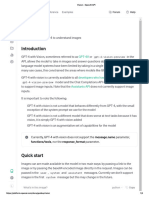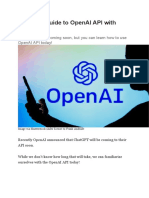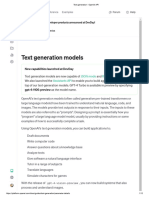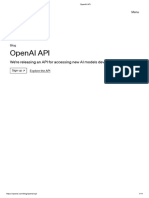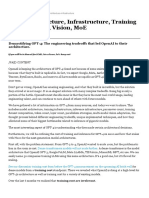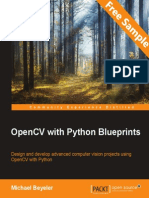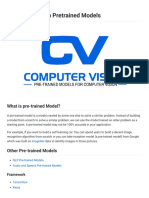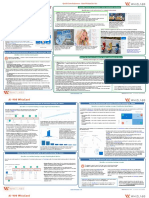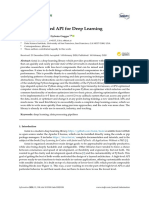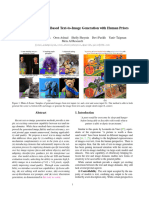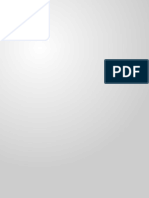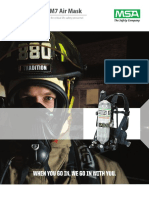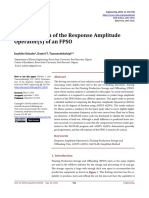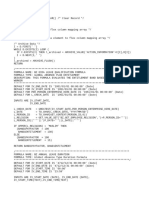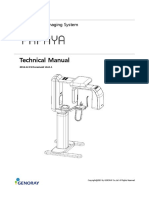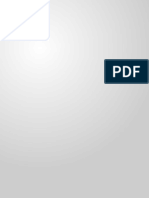26/07/2025, 07:56 Images and vision - OpenAI API
Copy page Chat Completions
Images and vision
Learn how to understand or generate images.
Overview
Create images
Use GPT Image or DALL·E to generate or edit images.
Process image inputs
Use our models' vision capabilities to analyze images.
https://platform.openai.com/docs/guides/images-vision?api-mode=chat&format=base64-encoded 1/10
�26/07/2025, 07:56 Images and vision - OpenAI API
In this guide, you will learn about building applications involving images with the OpenAI API. If
you know what you want to build, find your use case below to get started. If you're not sure
where to start, continue reading to get an overview.
A tour of image-related use cases
Recent language models can process image inputs and analyze them — a capability known as
vision. With gpt-image-1 , they can both analyze visual inputs and create images.
The OpenAI API offers several endpoints to process images as input or generate them as
output, enabling you to build powerful multimodal applications.
API SUPPORTED USE CASES
Responses API Analyze images and use them as input and/or generate images as output
Images API Generate images as output, optionally using images as input
Chat Completions API Analyze images and use them as input to generate text or audio
To learn more about the input and output modalities supported by our models, refer to our
models page.
Generate or edit images
You can generate or edit images using the Image API or the Responses API.
Our latest image generation model, gpt-image-1 , is a natively multimodal large language
model. It can understand text and images and leverage its broad world knowledge to generate
images with better instruction following and contextual awareness.
In contrast, we also offer specialized image generation models - DALL·E 2 and 3 - which don't
have the same inherent understanding of the world as GPT Image.
You can learn more about image generation in our Image generation guide.
Using world knowledge for image generation
The difference between DALL·E models and GPT Image is that a natively multimodal
language model can use its visual understanding of the world to generate lifelike images
including real-life details without a reference.
For example, if you prompt GPT Image to generate an image of a glass cabinet with the most
popular semi-precious stones, the model knows enough to select gemstones like amethyst,
https://platform.openai.com/docs/guides/images-vision?api-mode=chat&format=base64-encoded 2/10
�26/07/2025, 07:56 Images and vision - OpenAI API
rose quartz, jade, etc, and depict them in a realistic way.
Analyze images
Vision is the ability for a model to "see" and understand images. If there is text in an image, the
model can also understand the text. It can understand most visual elements, including
objects, shapes, colors, and textures, even if there are some limitations.
Giving a model images as input
You can provide images as input to generation requests either by providing a fully qualified
URL to an image file, or providing an image as a Base64-encoded data URL.
You can provide multiple images as input in a single request by including multiple images in
the content array, but keep in mind that images count as tokens and will be billed
accordingly.
Passing a URL Passing a Base64 encoded image
Analyze the content of an image python
1 import base64
2 from openai import OpenAI
3
4 client = OpenAI()
5
6 # Function to encode the image
7 def encode_image(image_path):
8 with open(image_path, "rb") as image_file:
9 return base64.b64encode(image_file.read()).decode("utf-8")
10
11
12 # Path to your image
13 image_path = "path_to_your_image.jpg"
14
15 # Getting the Base64 string
16 base64_image = encode_image(image_path)
17
18 completion = client.chat.completions.create(
19 model="gpt-4.1",
20 messages=[
21 {
22 "role": "user",
23 "content": [
24 { "type": "text", "text": "what's in this image?" },
25 {
26 "type": "image_url",
https://platform.openai.com/docs/guides/images-vision?api-mode=chat&format=base64-encoded 3/10
�26/07/2025, 07:56 Images and vision - OpenAI API
27 "image_url": {
28 "url": f"data:image/jpeg;base64,{base64_image}",
29 },
30 },
31 ],
32 }
33 ],
34 )
35
36 print(completion.choices[0].message.content)
Image input requirements
Input images must meet the following requirements to be used in the API.
Supported file types PNG (.png)
JPEG (.jpeg and .jpg)
WEBP (.webp)
Non-animated GIF (.gif)
Size limits Up to 50 MB total payload size per request
Up to 500 individual image inputs per request
Other requirements No watermarks or logos
No NSFW content
Clear enough for a human to understand
Specify image input detail level
The detail parameter tells the model what level of detail to use when processing and
understanding the image ( low , high , or auto to let the model decide). If you skip the
parameter, the model will use auto .
1 "image_url": {
2 "url": "https://upload.wikimedia.org/wikipedia/commons/thumb/d/dd/Gfp-wis
3 "detail": "high"
4 },
You can save tokens and speed up responses by using "detail": "low" . This lets the model
process the image with a budget of 85 tokens. The model receives a low-resolution 512px x
https://platform.openai.com/docs/guides/images-vision?api-mode=chat&format=base64-encoded 4/10
�26/07/2025, 07:56 Images and vision - OpenAI API
512px version of the image. This is fine if your use case doesn't require the model to see with
high-resolution detail (for example, if you're asking about the dominant shape or color in the
image).
On the other hand, you can use "detail": "high" if you want the model to have a better
understanding of the image.
Read more about calculating image processing costs in the Calculating costs section below.
Limitations
While models with vision capabilities are powerful and can be used in many situations, it's
important to understand the limitations of these models. Here are some known limitations:
Medical images: The model is not suitable for interpreting specialized medical images like
CT scans and shouldn't be used for medical advice.
Non-English: The model may not perform optimally when handling images with text of
non-Latin alphabets, such as Japanese or Korean.
Small text: Enlarge text within the image to improve readability, but avoid cropping
important details.
Rotation: The model may misinterpret rotated or upside-down text and images.
Visual elements: The model may struggle to understand graphs or text where colors or
styles—like solid, dashed, or dotted lines—vary.
Spatial reasoning: The model struggles with tasks requiring precise spatial localization,
such as identifying chess positions.
Accuracy: The model may generate incorrect descriptions or captions in certain
scenarios.
Image shape: The model struggles with panoramic and fisheye images.
Metadata and resizing: The model doesn't process original file names or metadata, and
images are resized before analysis, affecting their original dimensions.
Counting: The model may give approximate counts for objects in images.
CAPTCHAS: For safety reasons, our system blocks the submission of CAPTCHAs.
Calculating costs
Image inputs are metered and charged in tokens, just as text inputs are. How images are
converted to text token inputs varies based on the model. You can find a vision pricing
calculator in the FAQ section of the pricing page.
https://platform.openai.com/docs/guides/images-vision?api-mode=chat&format=base64-encoded 5/10
�26/07/2025, 07:56 Images and vision - OpenAI API
GPT-4.1-mini, GPT-4.1-nano, o4-mini
Image inputs are metered and charged in tokens based on their dimensions. The token cost of
an image is determined as follows:
A. Calculate the number of 32px x 32px patches that are needed to fully cover the image (a
patch may extend beyond the image boundaries; out-of-bounds pixels are treated as black.)
raw_patches = ceil(width/32)×ceil(height/32)
B. If the number of patches exceeds 1536, we scale down the image so that it can be covered
by no more than 1536 patches
r = √(32²×1536/(width×height))
r = r × min( floor(width×r/32) / (width×r/32), floor(height×r/32) / (height×r/32
C. The token cost is the number of patches, capped at a maximum of 1536 tokens
image_tokens = ceil(resized_width/32)×ceil(resized_height/32)
D. For gpt-4.1-mini we multiply image tokens by 1.62 to get total tokens, for
gpt-4.1-nano we multiply image tokens by 2.46 to get total tokens, and for o4-mini we
multiply image tokens by 1.72 to get total tokens, that are then billed at normal text token
rates.
Note:
Cost calculation examples
A 1024 x 1024 image is 1024 tokens
Width is 1024, resulting in (1024 + 32 - 1) // 32 = 32 patches
Height is 1024, resulting in (1024 + 32 - 1) // 32 = 32 patches
Tokens calculated as 32 * 32 = 1024 , below the cap of 1536
A 1800 x 2400 image is 1452 tokens
Width is 1800, resulting in (1800 + 32 - 1) // 32 = 57 patches
Height is 2400, resulting in (2400 + 32 - 1) // 32 = 75 patches
We need 57 * 75 = 4275 patches to cover the full image. Since that exceeds 1536,
we need to scale down the image while preserving the aspect ratio.
https://platform.openai.com/docs/guides/images-vision?api-mode=chat&format=base64-encoded 6/10
�26/07/2025, 07:56 Images and vision - OpenAI API
We can calculate the shrink factor as
sqrt(token_budget × patch_size^2 / (width * height)) . In our example, the
shrink factor is sqrt(1536 * 32^2 / (1800 * 2400)) = 0.603 .
Width is now 1086, resulting in 1086 / 32 = 33.94 patches
Height is now 1448, resulting in 1448 / 32 = 45.25 patches
We want to make sure the image fits in a whole number of patches. In this case we
scale again by 33 / 33.94 = 0.97 to fit the width in 33 patches.
The final width is then 1086 * (33 / 33.94) = 1056) and the final height is
1448 * (33 / 33.94) = 1408
The image now requires 1056 / 32 = 33 patches to cover the width and
1408 / 32 = 44 patches to cover the height
The total number of tokens is the 33 * 44 = 1452 , below the cap of 1536
GPT 4o, GPT-4.1, GPT-4o-mini, CUA, and o-series (except o4-mini)
The token cost of an image is determined by two factors: size and detail.
Any image with "detail": "low" costs a set, base number of tokens. This amount varies by
model (see charte below). To calculate the cost of an image with "detail": "high" , we do
the following:
Scale to fit in a 2048px x 2048px square, maintaining original aspect ratio
Scale so that the image's shortest side is 768px long
Count the number of 512px squares in the image—each square costs a set amount of
tokens (see chart below)
Add the base tokens to the total
MODEL BASE TOKENS TILE TOKENS
4o, 4.1, 4.5 85 170
4o-mini 2833 5667
o1, o1-pro, o3 75 150
computer-use-preview 65 129
Cost calculation examples (for gpt-4o)
A 1024 x 1024 square image in "detail": "high" mode costs 765 tokens
1024 is less than 2048, so there is no initial resize.
The shortest side is 1024, so we scale the image down to 768 x 768.
https://platform.openai.com/docs/guides/images-vision?api-mode=chat&format=base64-encoded 7/10
�26/07/2025, 07:56 Images and vision - OpenAI API
4 512px square tiles are needed to represent the image, so the final token cost is
170 * 4 + 85 = 765 .
A 2048 x 4096 image in "detail": "high" mode costs 1105 tokens
We scale down the image to 1024 x 2048 to fit within the 2048 square.
The shortest side is 1024, so we further scale down to 768 x 1536.
6 512px tiles are needed, so the final token cost is 170 * 6 + 85 = 1105 .
A 4096 x 8192 image in "detail": "low" most costs 85 tokens
Regardless of input size, low detail images are a fixed cost.
GPT Image 1
For GPT Image 1, we calculate the cost of an image input the same way as described above,
except that we scale down the image so that the shortest side is 512px instead of 768px. The
price depends on the dimensions of the image and the input fidelity.
When input fidelity is set to low, the base cost is 65 image tokens, and each tile costs 129
image tokens. When using high input fidelity, we add a set number of tokens based on the
image's aspect ratio in addition to the image tokens described above.
If your image is square, we add 4096 extra input image tokens.
If it is closer to portrait or landscape, we add 6144 extra tokens.
To see pricing for image input tokens, refer to our pricing page.
We process images at the token level, so each image we process counts towards your tokens
per minute (TPM) limit.
For the most precise and up-to-date estimates for image processing, please use our image
pricing calculator available here.
https://platform.openai.com/docs/guides/images-vision?api-mode=chat&format=base64-encoded 8/10
